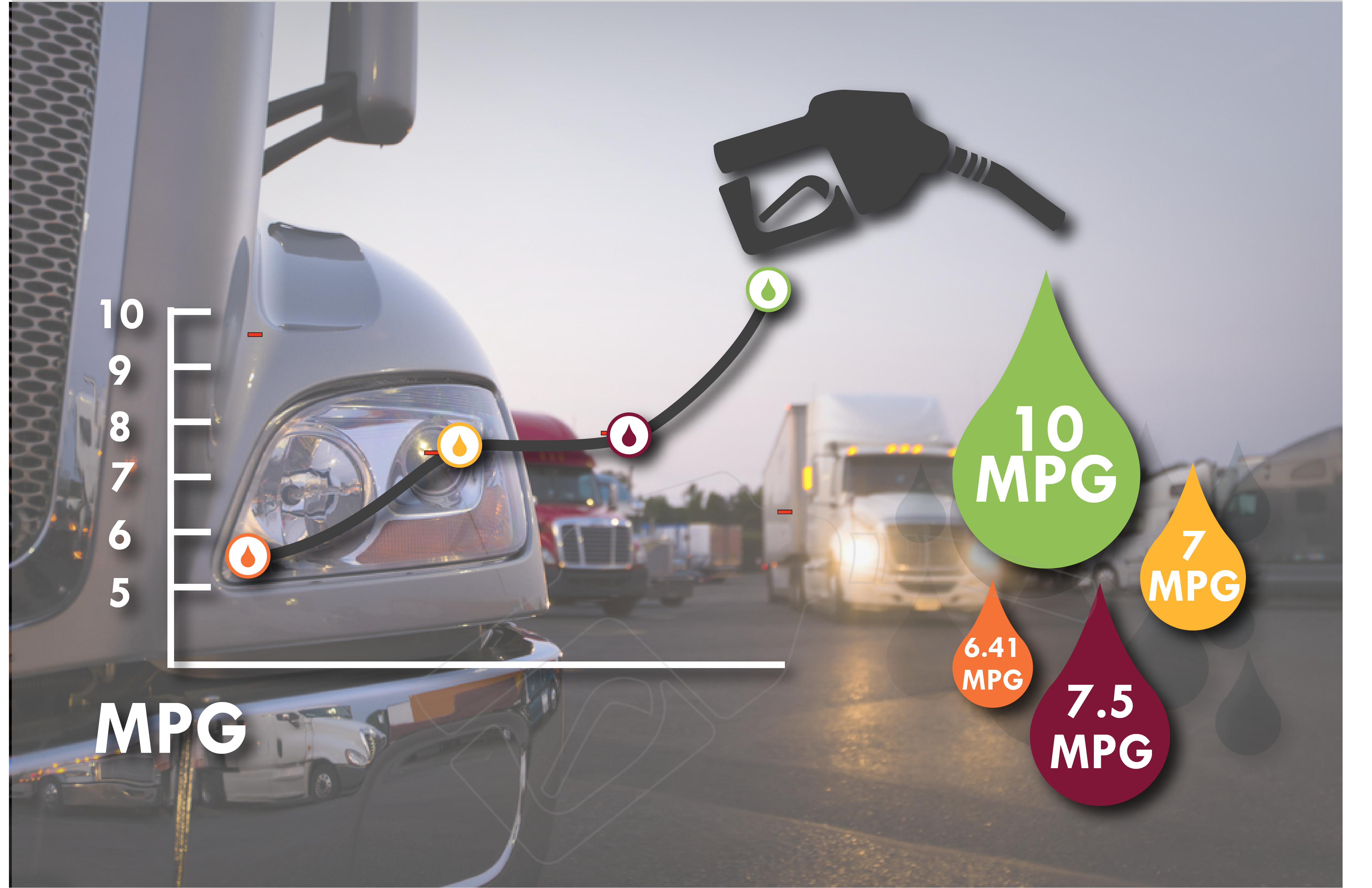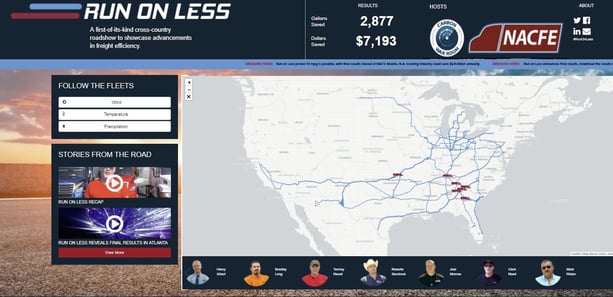Fleet Advantage was founded in 2008 on a number of principles formulated around information technology. It was also founded upon the necessity to help organizations improve their tractor fleets’ productivity and to reduce operating costs by improving their fuel efficiency from 6.0 MPG to 10.0 MPG. One of the cornerstones was the Greenhouse Gas Mandate that took effect in 2011 with its requirement to reduce CO2 emissions, which can only be accomplished by improving fuel economy/MPG. The technology and supporting data analytics have arrived, and we are now seeing the results we knew were there - tracking a goal of 10.0 MPG.
A recent success program called “Run on Less”, organized by the Carbon War Room and the North American Council for Freight Efficiency, proved that 10 MPG is possible using technology that are available on the market today. The results exceeded the original 9 MPG goal set by CWR and NACFE.
 Fleet Advantage began monitoring the metrics of fuel economy, such as rolling resistance, aerodynamics, idle time, new engine and transmission technologies while at the same time, began accumulating a vast warehouse of maintenance and repair data. GHG Phase 1 Mandate (Model years 2014-2018) is a success beyond its expectations by exceeding the 2.5% annualized MPG improvement. The 2018 model year tractors are routinely achieving 7.57 driving MPG and we remain convinced that 10 MPG will become a standard in the near future.
Fleet Advantage began monitoring the metrics of fuel economy, such as rolling resistance, aerodynamics, idle time, new engine and transmission technologies while at the same time, began accumulating a vast warehouse of maintenance and repair data. GHG Phase 1 Mandate (Model years 2014-2018) is a success beyond its expectations by exceeding the 2.5% annualized MPG improvement. The 2018 model year tractors are routinely achieving 7.57 driving MPG and we remain convinced that 10 MPG will become a standard in the near future.
This transition to new technology has come at a cost however. Our maintenance database clearly indicates that expenses for emissions systems and other new technologies are significantly incurring costs at or about 400,000 miles or 5 years.
To mitigate these rising costs, we knew that we needed to show the industry the solution and benefits to run equipment for a shorter period of time without incurring excess costs.
We introduced our short term flexible lease solution EXchangeIT®, which is typically a 5-year lease with a 1-4 year option to EXchange for new equipment. With our asset management solutions and offerings, we have been able to save our clients millions of dollars in addition to improving productivity and optimizing their fleet operation. We have gone from monitoring 263 trucks in 2009 to over 10,000 tractors, while monitoring over 23,000 tractors each month, in addition to trailers.
Our business model today has greater value than when it was first designed. We are confident that well-capitalized companies operating private fleets along with for-hire operators, will eventually all identify the benefits of cycling their trucks out every 4 years, reaping the benefits of fuel economy as well as safer and more driver-friendly equipment.
Below are some excerpts from the recent success of “Run On Less”:
- Run on Less, put on by the Carbon War Room and the North American Council for Freight Efficiencies is a three-week event that kicked off from multiple points across the U.S. andwrapped up during the North American Commercial Vehicle Show
- The fleets represent myriad companies hauling goods across North America
- Utilized a variety of commercially available technologies, including 6x2 axles, trailer and tractor aerodynamics, engine accessories, tire pressure systems, automated transmissions, low viscosity oils and others, they demonstrated that it is possible to save fuel in real world operations
- The highest mpg achieved in a single day was 12.8, and three different trucks had days over 12.5 mpg
- All truckers dealt with hurricanes Harvey or Irma
- The seven trucks have some similar specifications, but all have differences, demonstrating there are many different combinations of technologies that can achieve high levels of mpg
- To put it in perspective, if the 1.7 million trucks on North American highways today achieved the same level of efficiency as the trucks in the Run, they would save 7 billion gallons of diesel fuel, $24.3 billion and 98 million tons of CO2 each year







